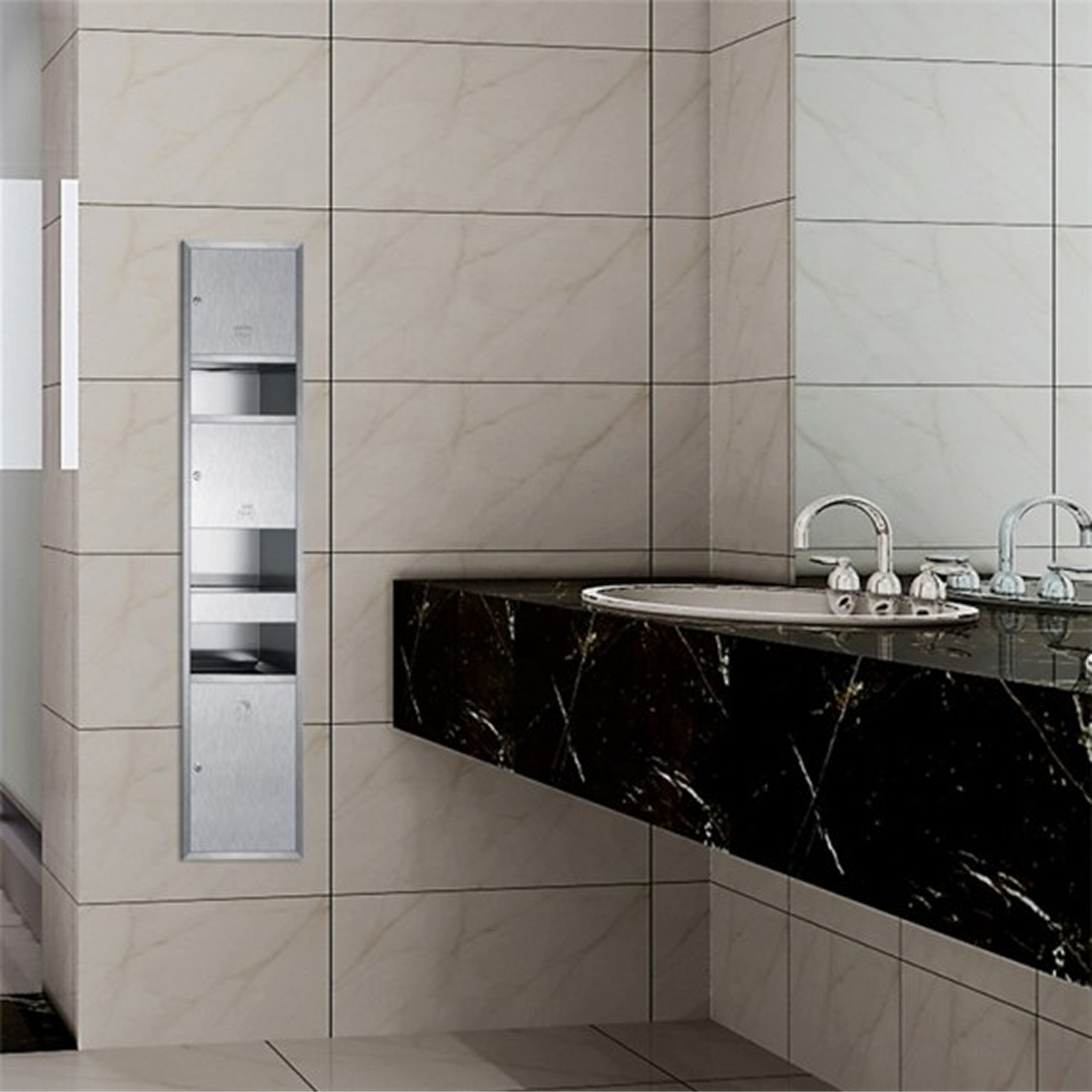In the world of automation, efficiency, aesthetics, and space optimization play a crucial role in determining the success of any system. One often overlooked yet highly beneficial component in this sector is the recess panel. Designed to be installed flush with walls, these panels provide a seamless and practical solution for various automation applications.
Recess panels are commonly used in washrooms, commercial buildings, and industrial setups to house automation systems such as hand dryers, paper dispensers, and waste receptacles. They enhance hygiene, improve space utilization, and contribute to a clutter-free environment. This article explores the key applications and benefits of recess panels and why they are an essential component in the automation industry.
Applications of Recess Panels
Recess panels are widely utilized across different industries and automation systems. Some common applications include:
- Industrial Automation – Used for housing control panels, electrical components, and automation devices in manufacturing units, ensuring safety, organization, and easy accessibility.
- Commercial Buildings – Installed in offices, malls, and public spaces to accommodate lighting controls, security systems, and HVAC controls without compromising aesthetics.
- Smart Homes – Integrated into walls to house home automation systems, including lighting, climate control, and entertainment hubs, enhancing convenience and modernity.
- Healthcare Facilities – Used for mounting medical equipment, monitoring systems, and control panels in hospitals, ensuring a clutter-free and hygienic environment.
- Data Centers – Helps organize server racks, cable management, and networking equipment for improved efficiency, airflow, and accessibility.
- Transportation Hubs – Airports, railway stations, and metro systems use recess panels for housing display systems, security controls, and automation interfaces, streamlining operations.
- Public Washrooms – Frequently used to house automatic hand dryers, paper dispensers, and waste receptacles, promoting hygiene and efficient space utilization.
Key Benefits of Recess Panels
1. Optimized Space Utilization
Recess panels save space by being embedded within walls or structures. Unlike traditional surface-mounted panels, they help maintain an organized and uncluttered environment, making them ideal for automation systems with multiple control units and devices.
2. Sleek and Modern Aesthetics
Providing a clean and contemporary look, recess panels blend seamlessly with their surroundings. Their integration into walls and ceilings eliminates bulky protrusions, making them an excellent choice for commercial and residential spaces where design aesthetics are crucial.
3. Enhanced Safety and Protection
By being embedded into a surface, recess panels minimize the risk of accidental damage. Unlike exposed panels, they remain secure, reducing the chances of tampering, exposure to environmental hazards, and accidental impact, thus safeguarding delicate wiring and sensitive automation equipment.
4. Efficient Cable Management
Automation systems require extensive cabling, and recess panels facilitate efficient cable organization. By concealing wires within the panel structure, they prevent tangling and damage while reducing safety hazards caused by exposed wiring. This also simplifies maintenance and troubleshooting.
5. Increased Durability and Longevity
Recess panels experience less external wear and tear since they are installed within walls or enclosures. This enhances their lifespan and reduces the need for frequent replacements, making them a cost-effective solution, especially in industrial automation setups.
6. Customization and Versatility
Available in various sizes, designs, and materials, recess panels can be customized to meet specific needs. Whether used for housing automation control units, electrical components, or display screens, their flexibility makes them suitable for diverse applications across different industries.
7. Noise and Vibration Reduction
Industrial automation equipment can generate noise and vibrations. Recess panels help dampen these effects by enclosing components within a structure, leading to a quieter and more stable working environment, improving operational efficiency and comfort.
8. Energy Efficiency and Sustainability
Well-designed recess panels contribute to insulation and energy efficiency by reducing exposure to external temperatures. This helps maintain optimal working conditions for automation equipment, leading to lower energy consumption and improved system performance, supporting sustainability initiatives.
Conclusion
Recess panels play a crucial role in the automation industry, offering benefits such as space optimization, enhanced aesthetics, improved safety, durability, and better cable management. Whether optimizing industrial efficiency or enhancing smart home automation, recess panels provide a practical and efficient solution.
Integrating recess panels into automation setups helps businesses and homeowners achieve a balance between functionality and design, ensuring seamless and productive experiences. If you’re considering automation solutions, investing in high-quality recess panels is a strategic decision for long-term efficiency and sustainability.



